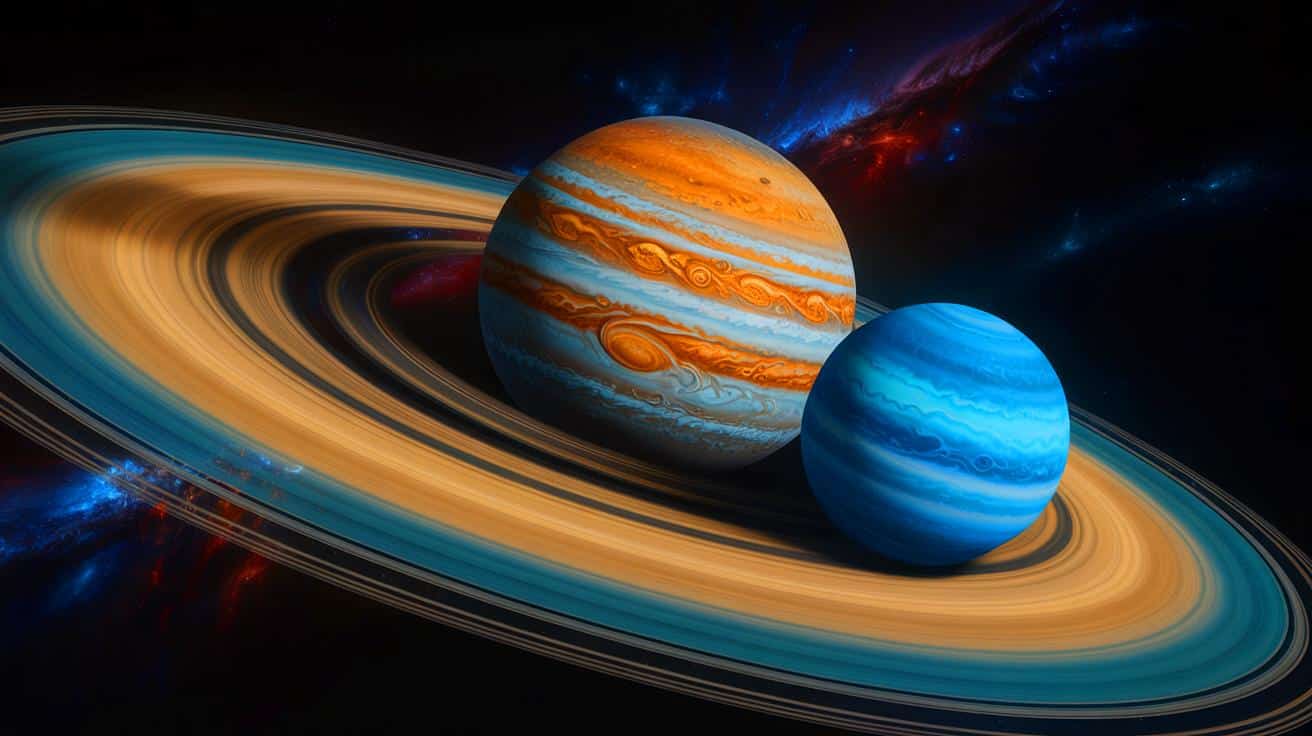IN A NUTSHELL
🌌 Scientists unveil a unified model explaining jet streams on gas giants.
🪐 New research reveals single mechanism for eastward and westward winds.
💨 Study highlights atmospheric dynamics on Jupiter, Saturn, Uranus, and Neptune.
🔭 Findings could impact exoplanet research and understanding of planetary climates.
In a groundbreaking development, researchers have unveiled a unified model that explains the mysterious jet streams on the giant gas planets of our solar system. For decades, scientists have puzzled over why these massive celestial bodies, such as Jupiter and Neptune, exhibit winds that flow in opposite directions. Jupiter’s winds race eastward, while Neptune’s blow westward. This new model, however, offers a singular explanation that could revolutionize our understanding of planetary atmospheres, both within our solar system and beyond.
Understanding Gas Giant Jet Streams
The study, led by Keren Duer-Milner of the Netherlands Research School of Astronomy, posits that a single mechanism can account for the direction of jet streams on the gas giants. The key factor is the depth of the planet’s atmosphere. Deep within these planets, heat rises through convection, similar to the process seen in boiling water. The rapid rotation of these planets causes these currents to twist into horizontal flows, known as jet streams. Depending on the depth of the convective region, the equatorial jet can flow either eastward or westward.
This phenomenon, known as bifurcation, means that a planet’s atmosphere can settle into one of two stable configurations. For instance, Jupiter and Saturn, with their deep convective layers, exhibit eastward jet streams. Conversely, Uranus and Neptune, which have shallower layers, display westward streams. These jets are the fastest winds in our solar system, reaching speeds of 311 to 1,243 mph, far exceeding any terrestrial winds.
Same Mechanism, Different Outcomes
The revelation that the same mechanism can produce different atmospheric outcomes on these planets challenges previous assumptions. Scientists once believed that the differing wind directions on Jupiter and Neptune were the result of entirely separate processes. To test their model, the research team employed global circulation models (GCMs) and computer simulations, comparing their predictions with data from the Juno spacecraft orbiting Jupiter.
If the model proves accurate, it could also shed light on atmospheric dynamics on exoplanets—those gas and ice giants orbiting stars beyond our solar system. Given that many exoplanets share characteristics such as fast rotation and internal heat, this model could be pivotal in understanding their climates and atmospheric behaviors.
Implications for Planetary Science
This discovery holds significant implications for the field of planetary science. By providing a unified explanation for the jet streams on gas giants, researchers gain a deeper understanding of the fundamental processes that govern planetary atmospheres. This knowledge extends beyond our solar system, potentially elucidating the atmospheric dynamics of countless exoplanets across the galaxy.
According to postdoctoral researcher Keren Duer-Milner, the excitement stems from finding an elegant solution to a complex problem. “Understanding these winds is crucial because it helps us understand the fundamental processes that govern planetary atmospheres,” she stated. This breakthrough provides scientists with a new tool for exploring the diversity of planetary atmospheres and climates throughout the universe.
Future Research Opportunities
While the current model offers a compelling explanation, further research is needed to validate its findings across different planetary environments. The team plans to continue analyzing data from the Juno spacecraft to solidify their conclusions. Moreover, as telescope technology advances, scientists may soon gather more detailed observations of exoplanets, testing the model’s applicability beyond our solar system.
The potential for this model to transform our understanding of atmospheric science is immense. It not only answers long-standing questions about the behavior of gas giants but also opens new avenues for exploring the atmospheres of distant worlds. As scientists continue to refine their understanding, they may uncover even more complexities within these fascinating planetary systems.
This new model represents a significant leap forward in our understanding of planetary atmospheres. By providing a unified explanation for the jet streams on gas giants, it challenges previous assumptions and opens new pathways for research. As we look to the future, one question remains: How will this newfound understanding of planetary atmospheres influence our search for life beyond Earth?
This article is based on verified sources and supported by editorial technologies.
Did you like it? 4.4/5 (30)

